From the tree to the bottle
The work of a whole year

The Production
From the olive
There’s a fundamental rule: extra virgin olive oil is the work of a whole year, only if well done it gives an excellent product.
The work begins in the field: the soil must be periodically ploughed and cared to give the necessary nutrients to the trees. The trees must be pruned properly to give breath to the fruits and new lifeblood to the plant.
It’s important to analyze the flowering (very few flowers will become fruit) and pick up the first signs of the future olive oil season. Then it’s necessary to follow the fruit’s growth to protect plants and fruits. The ripeness of the olives must be constantly monitored in the entire field, to determine the exact time to harvest. It’s a very important choice because it affects the sensoial result.
.. to the extra virgin olive oil!
The olives are harvested directly from the trees with mechanical facilitators which don’t traumatize the plant or damage the fruit.



Skillful gestures and technique
From the field to the mill
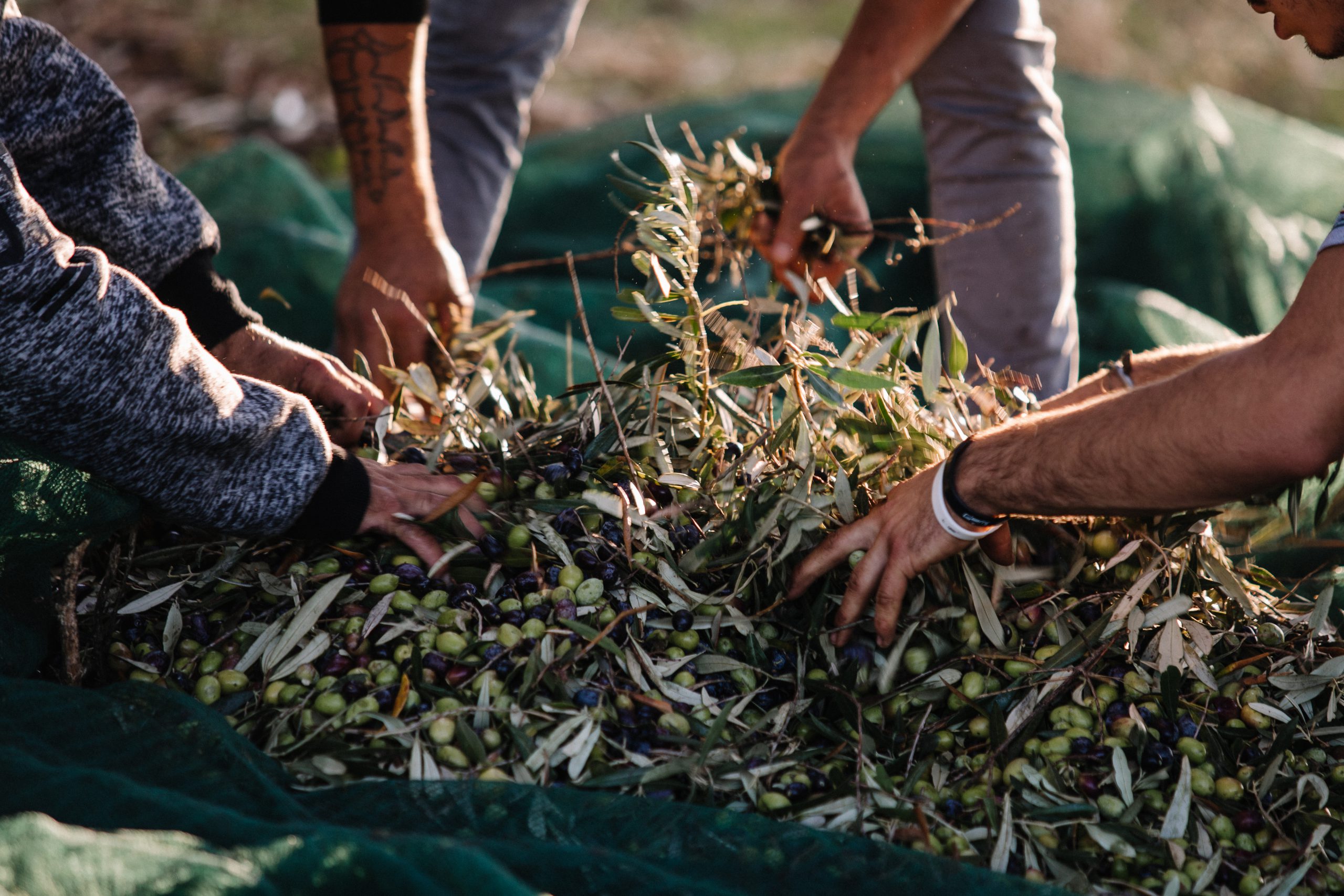
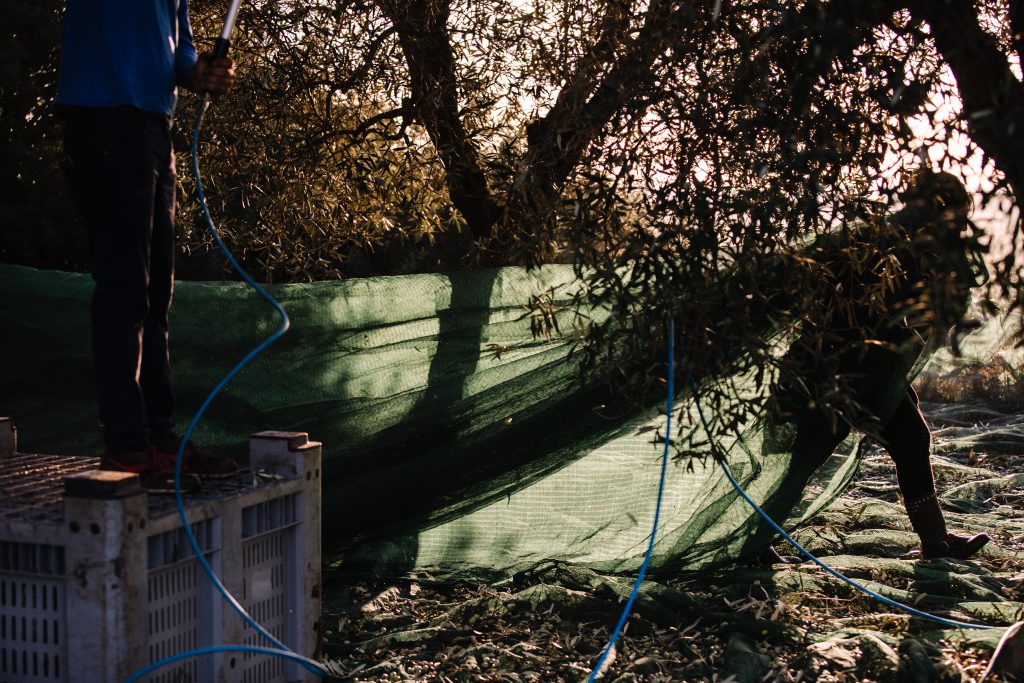
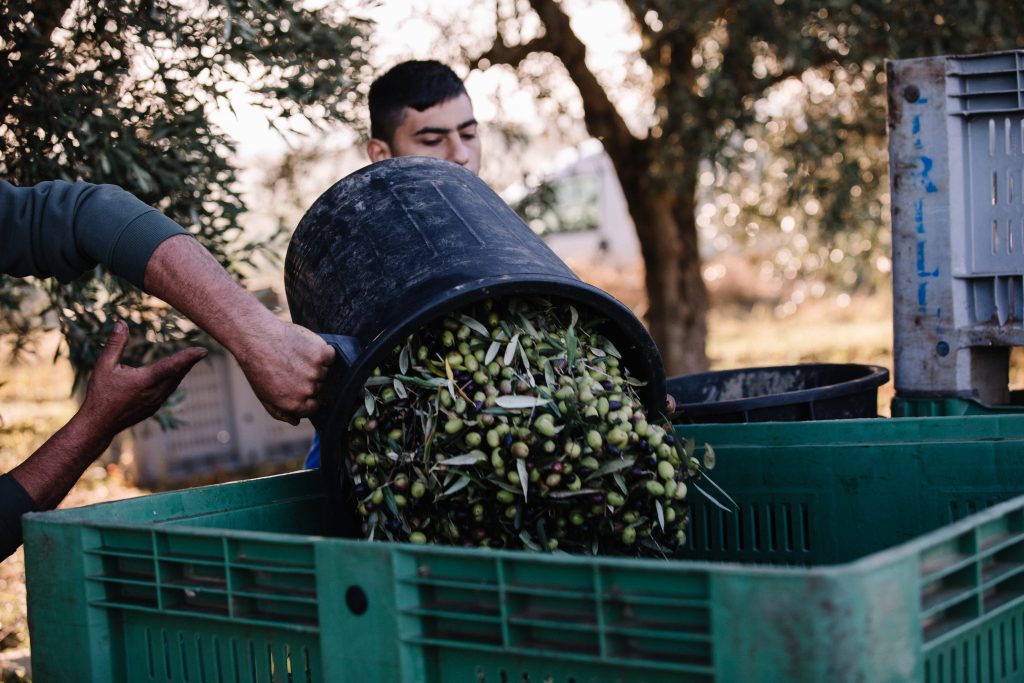
The harvested olives are placed in large perforated boxes, to facilitate the circulation of air; they are taken to the mill for starting processing within 12ours, 24 at most. An olive, like any fruit, begins to deteriorate once removed from the tree, its source of life. That’s why it’s important to be quick between harvesting and processing times, to bring the scents and flavours of the olive into the bottle.
Cleaning and control
Before entering into the crusher the olives are defoliated and washed. The crusher is a stainless steel box in which some speed-controlled metal blades reduce the olives to pulp.
The olive paste is collected into the kneader, a stainless steel tank in which helical blades rotate mixing the paste slowly. It’s a precious movement, designed to optimize the subsequent extraction of the olive oil. In this phase, the liquid component of the fruit starts to come off the pulp.
The pasta passes into the decanter: a cylinder in which, by centrifugal force alone, the oil is definitively extracted, while pulp and vegetation water are discarded.
Finally, in the separator, again thanks to a whirling mechanical movement, any residual water separates from the extra virgin olive oil which reveals in all its purity
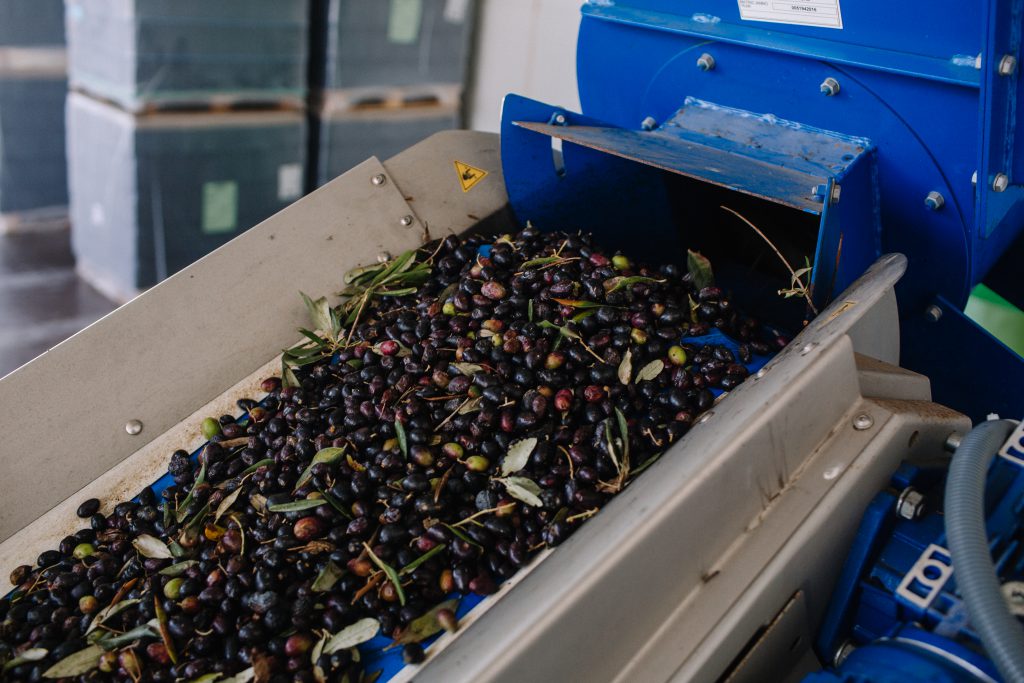
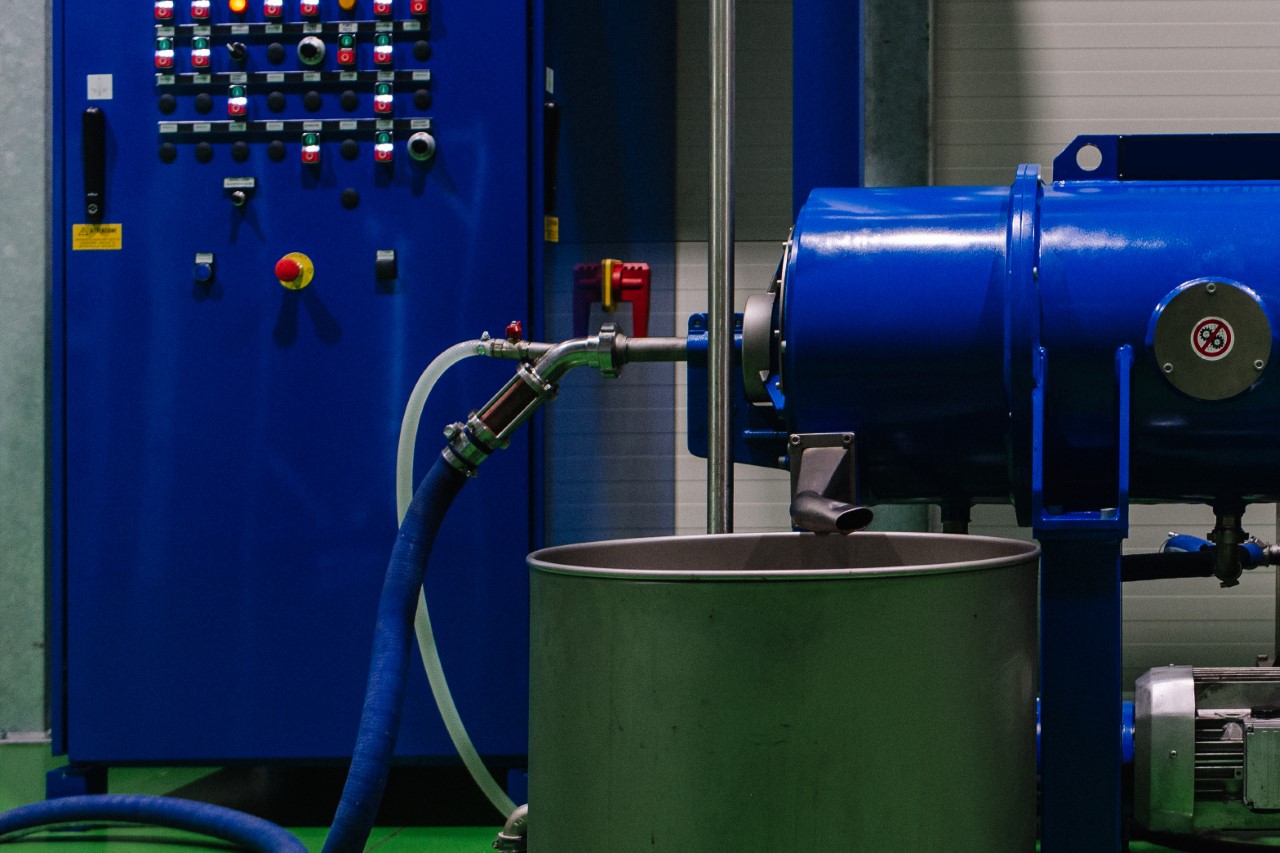
The pasta passes into the decanter: a cylinder in which, by centrifugal force alone, the oil is definitively extracted, while pulp and vegetation water are discarded.
Finally, in the separator, again thanks to a whirling mechanical movement, any residual water separates from the extra virgin olive oil which reveals in all its purity.
Now you know why the extra virgin olive oil is a real olive juice.
It is cold extracted
The temperature, in each processing step, is monitored to not exceed 27 ° C. This is what classifies an extra virgin as “cold extracted”. This process is less advantageous as it reduces the oil return from the olives, but it’s an element of quality because it preserves the aromas and organoleptic characteristics of the fruit.
To conclude
We usually filter our extra virgin olive oils with natural cellulose sheets. To filter the product is a care for the consumer: it serves to prevent the formation of natural residue deposit on the bottom of the containers, so the product is better preserved over time.
Before entering into the crusher the olives are defoliated and washed. The crusher is a stainless steel box in which some speed-controlled metal blades reduce the olives to pulp.
The olive paste is collected into the kneader, a stainless steel tank in which helical blades rotate mixing the paste slowly. It’s a precious movement, designed to optimize the subsequent extraction of the olive oil. In this phase, the liquid component of the fruit starts to come off the pulp.
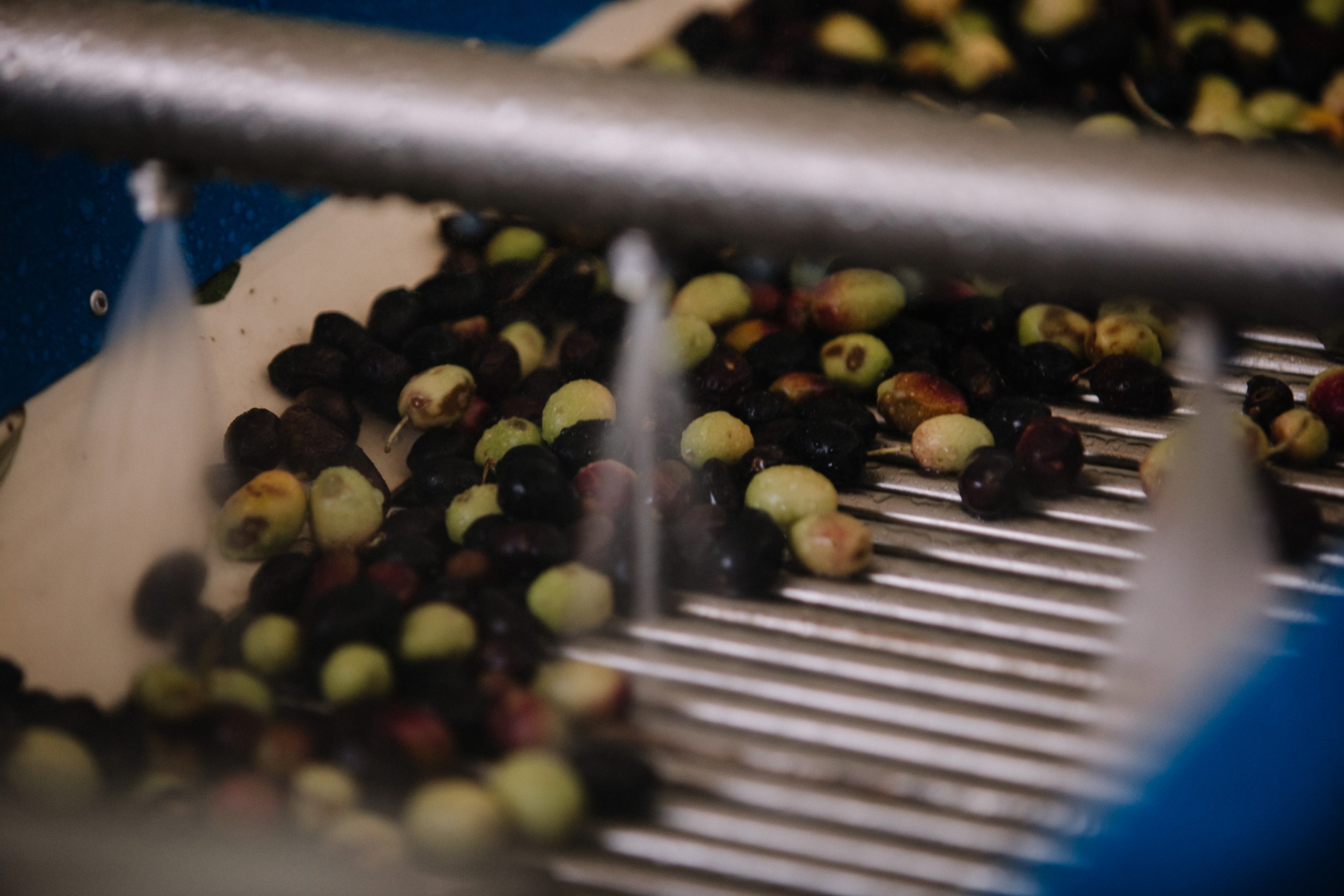

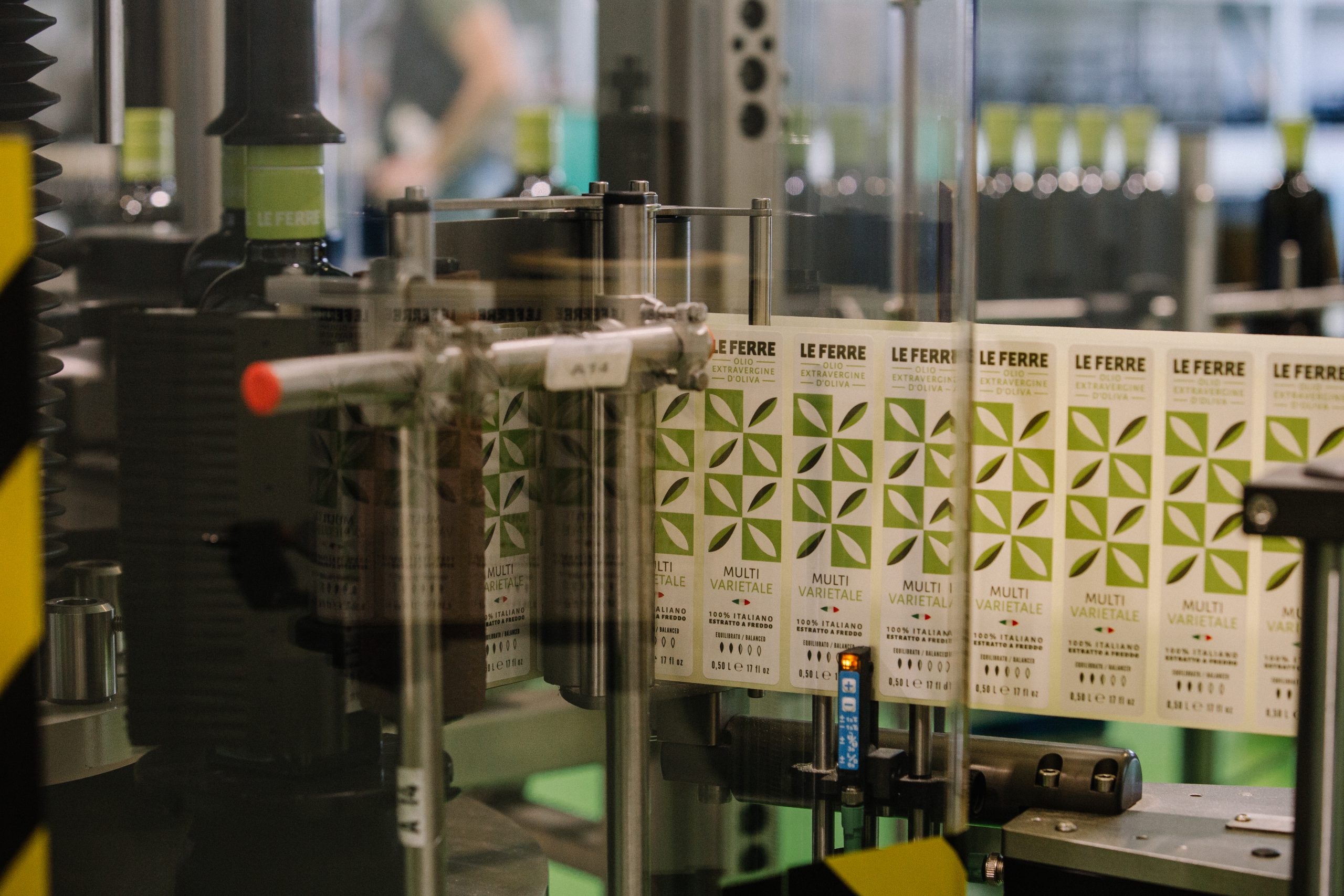
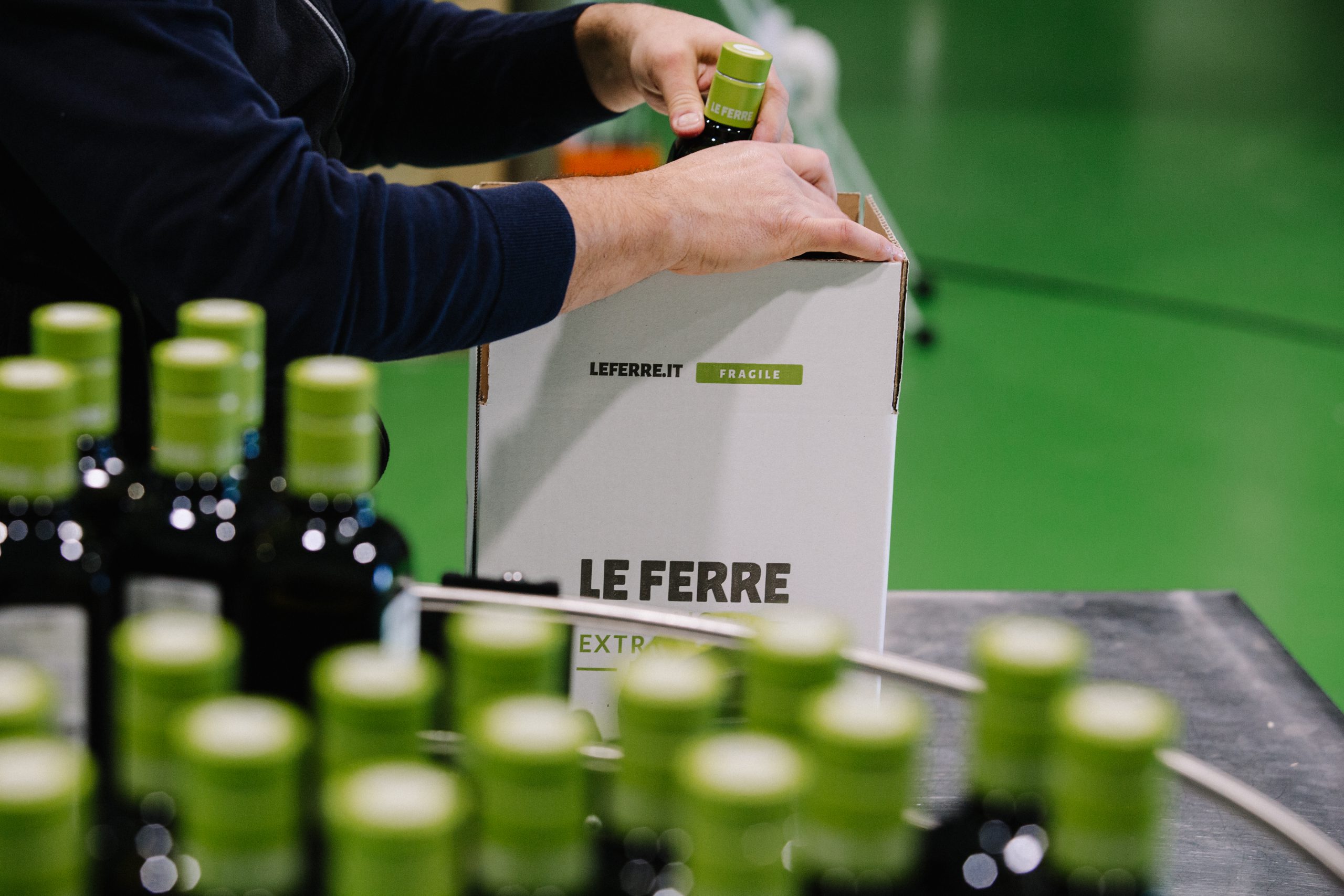


1 . CONVEYOR-BELT
It allows the entry of olives into the processing, in order.

2 . DEFOLIATOR
It removes leaves or sprigs with quick air blast.
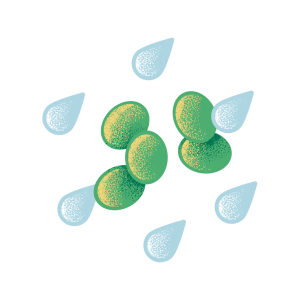
3 . WASHING
Washing olives with a continuous replacement of water, to get rid soil and other impurities.

4 . CRUSHER
It crushs the olives with metal cylinders or hammers, reducing into paste.

5 . KNEADER
Mix slowly the paste to break the oil-water emulsion and facilitate the aggregation of the oil drops.
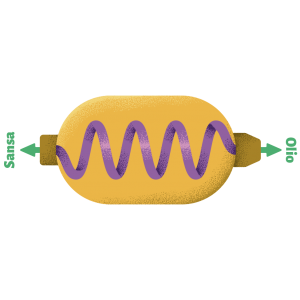
6 . DECANTER
Extraction of the olive oil through a centrifugal movement, waste of pomace and vegetation water.

7 . SEPARATOR
Centrifugal force for a natural separation between oil and water, due to different specific weight.


